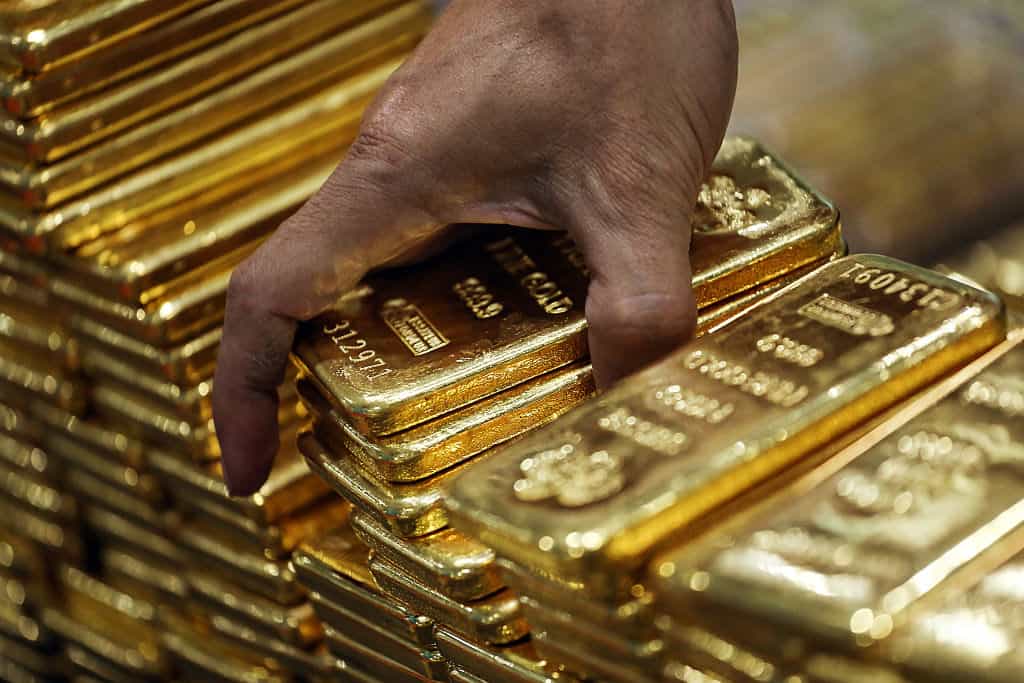SINGAPORE — Gold demand in India fell 30% in the previous quarter, but a sense of “cautious optimism” has returned to the market, according to the World Gold Council.
India is one of the largest markets for gold.
Jewelry demand in India between July to September fell 48% year-on-year to 52.8 tonnes from around 101.6 tonnes a year earlier, the organization said in a report. But demand for gold as an investment rose 52% to 33.8 tonnes on-year.
Overall gold demand — which includes jewelry and investment — fell in the quarter ending September, but the decline was less severe than the 70% drop seen in the previous three months, Somasundaram PR, managing director for India at the World Gold Council, said in a statement.
“This has been partially due to easing of lockdown and some low prices in August that provided a small window of buying opportunities for the discerning,” he said.
The precious metal plays an important role in India’s culture — it’s considered auspicious to buy gold during festive occasions or to give gold jewelry as a gift at weddings. It is also seen as a symbol of affluence and a safe investment.
Somasundaram explained that demand for gold between July to September tends to be relatively low, driven by seasonal factors such as monsoons and inauspicious periods. The drop in demand for gold jewelry was also due to many festivals and weddings being canceled or postponed due to the coronavirus pandemic that has infected more than 8 million people in India.
“On the other hand, gold’s safe haven attributes and an anticipation of price rise paved the way for an increase in investment demand for gold bars and coins,” he added.
Typically gold demand rises in the three months between October to December due to festivals such as Dussehra and Dhanteras — the first day marking the Diwali festival — as well as a busy wedding season. But high gold prices and the impact of the pandemic is set to affect sentiment and demand. Covid-19 triggered in lockdowns in India that slashed growth prospects and left millions unemployed.
Though there are expectations for some pent-up demand to surface in the current quarter, it is unlikely to offset a decline in full-year gold demand for India, according to the World Gold Council.
Somasundaram said a “sense of cautious optimism has returned” as people are gradually learning to live with Covid-19.
“However as we are still reeling under the impact of the pandemic and fear of second wave of infections without clear sight of many variables on consumer behaviour, volatile prices or length of the disruptions, we will not be able to quantify the impact on the full year gold demand in India other than to say that demand could be multi-year low,” Somasundaram said.
Global trends
The World Gold Council’s gold demand trends report said global demand for gold declined 19% year-on-year to 892 tonnes for the July-September quarter — it was the lowest quarterly total since the third quarter of 2009.
Central banks sold 12.1 tonnes of gold in net sales in the July-September quarter for the first time since late 2010. That was driven primarily by central banks in Uzbekistan and Turkey while six others, including the Reserve Bank of India, modestly increased their gold reserves, according to the report.
Though overall demand for gold fell, the three months saw a significant uptick in investment demand which rose 21% year-on-year as investors bought gold bars, coins and gold-backed ETFs.
Gold is seen as a safe investment to put money in when markets face uncertainties or are volatile, which has been the case during the the pandemic and ahead of next week’s U.S. presidential election.
Buyers, however, shied away from buying gold jewelry due to a record high price for the precious metal in many currencies and the economic uncertainties they face due to the pandemic-led global recession. Jewelry demand fell 29% compared to a year ago.
Spot gold rallied above $2,000 in August before pulling back to trade around the $1,900 level in recent weeks. It traded at around $1,869 an ounce on Friday afternoon at 1:51 p.m. HK/SIN.
The pandemic’s impact is still being felt in the global gold market, according to Louise Street, market intelligence at the World Gold Council.
“The combination of continued social restrictions in many markets, the economic impact of lockdowns, and all-time high gold prices in many currencies proved too much for many jewellery buyers,” Street said in a statement. “We believe that this trend will likely continue for the foreseeable future.”
Total supply of gold fell 3% year-on-year to 1,223.6 tonnes in the July-September quarter, tied to coronavirus-related restrictions at mines in the first-half of the year.

